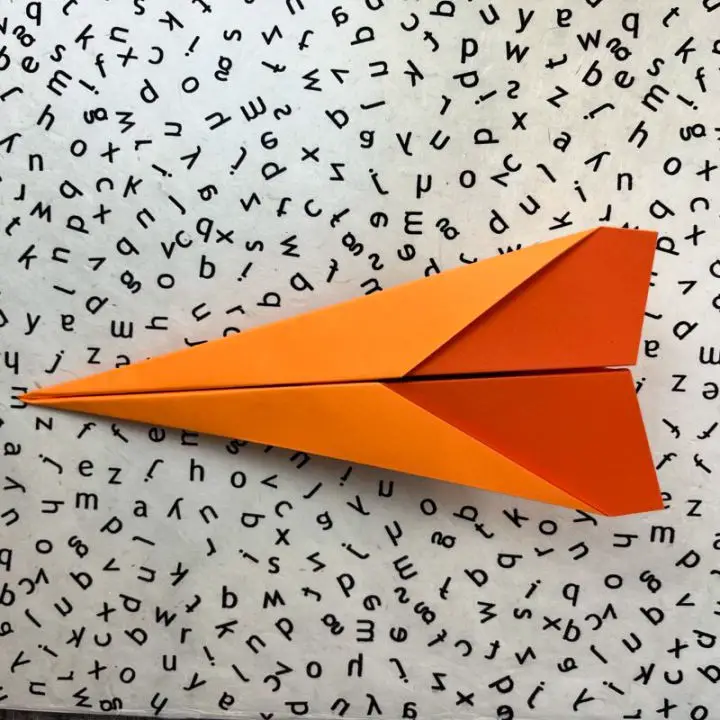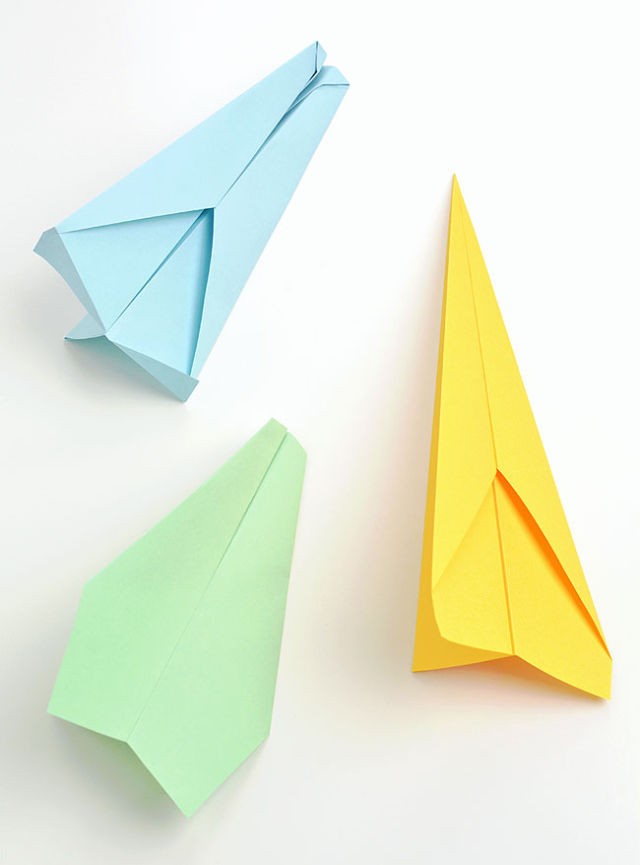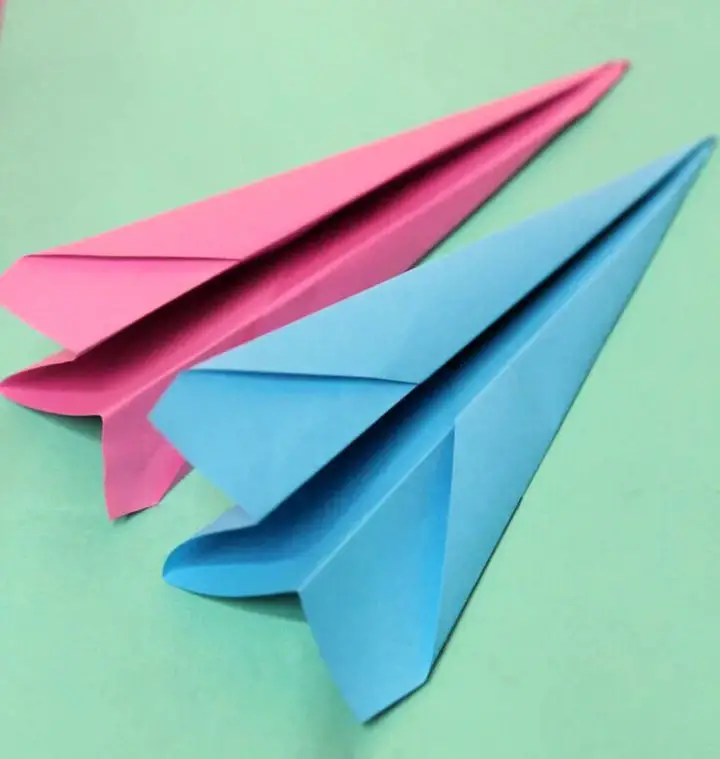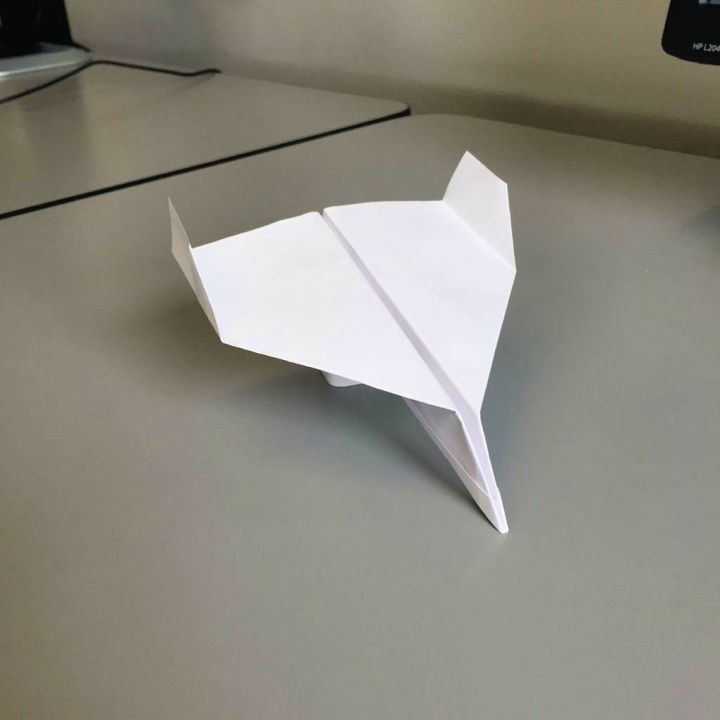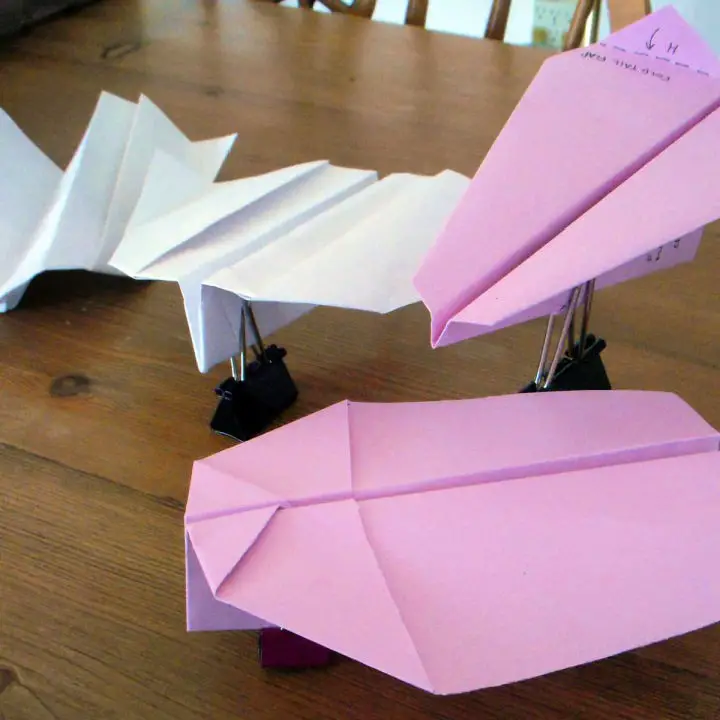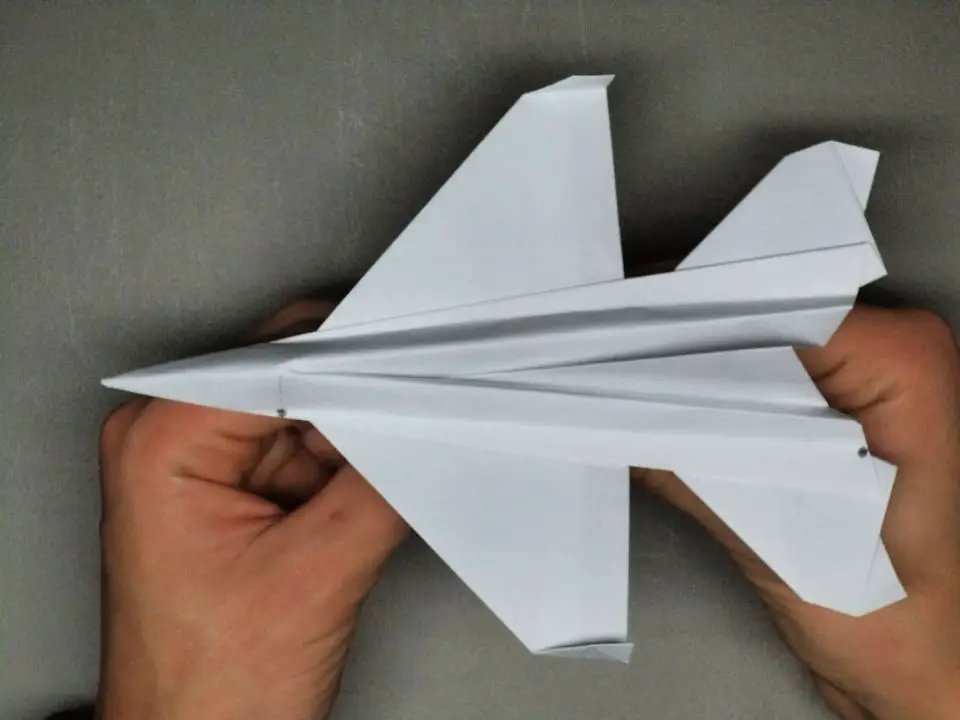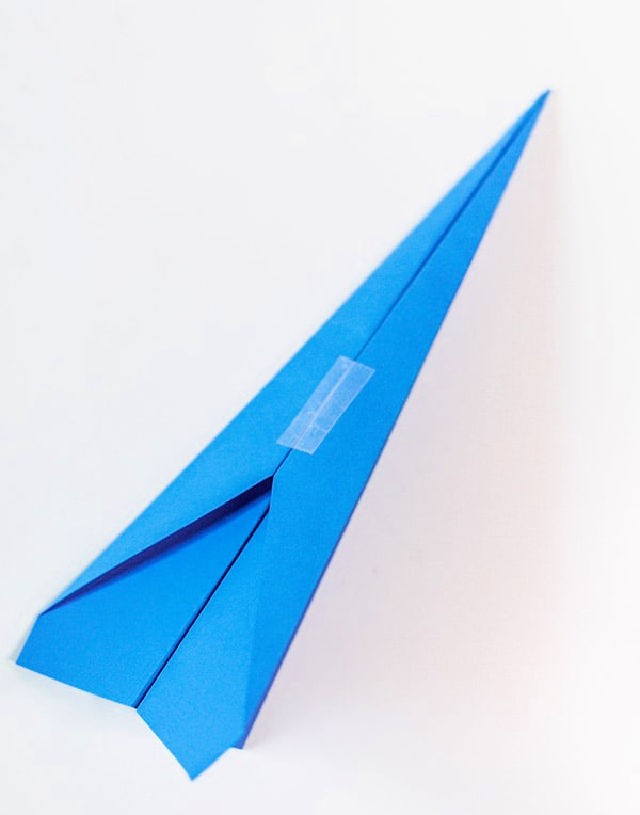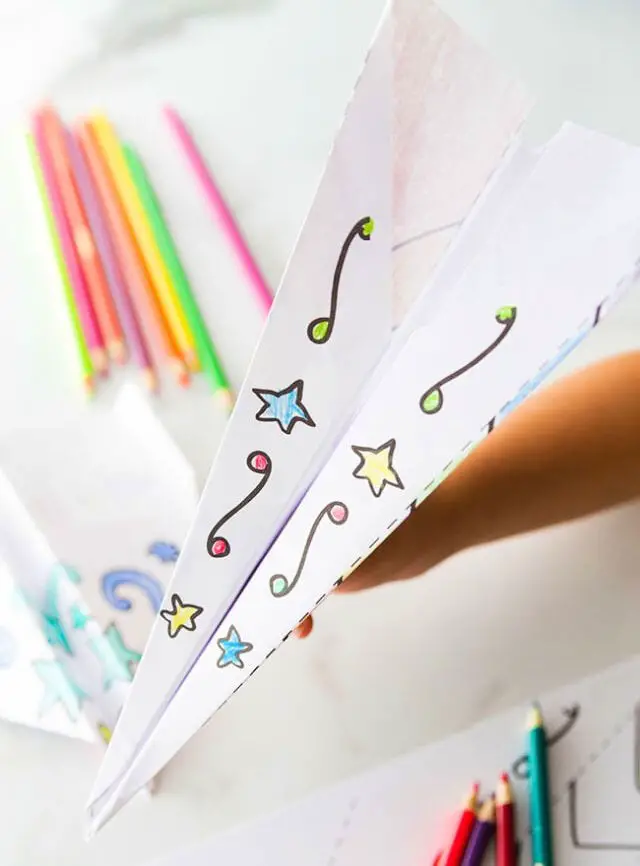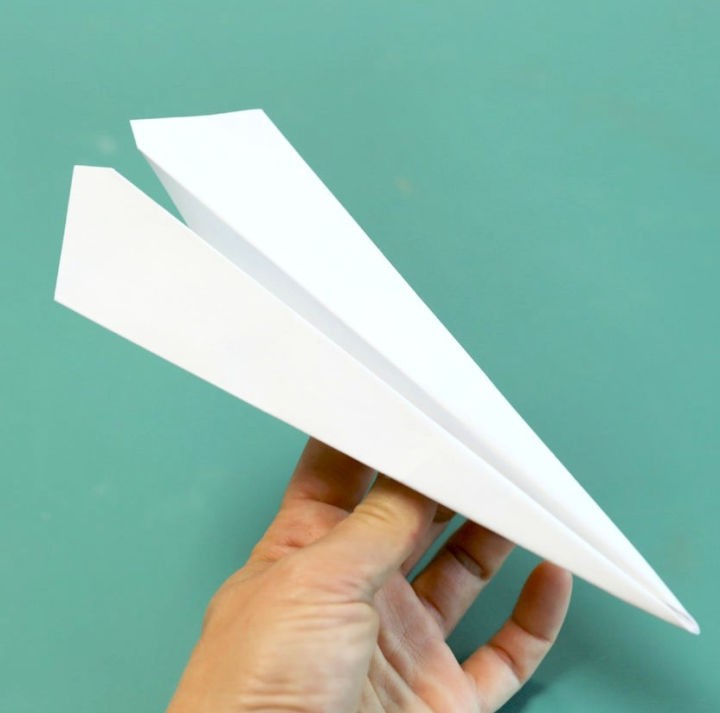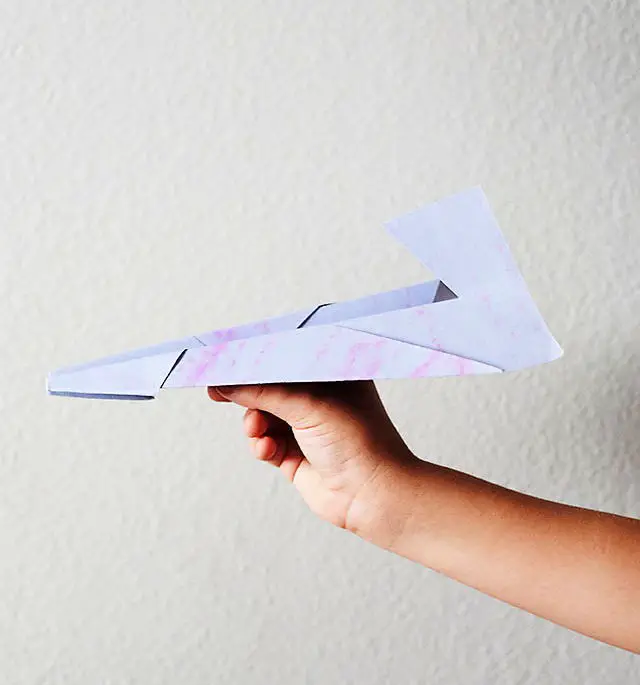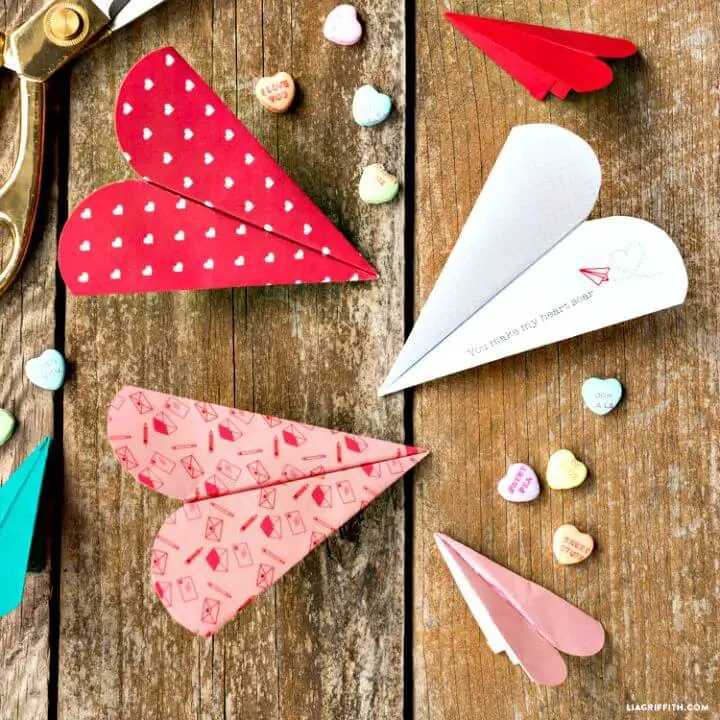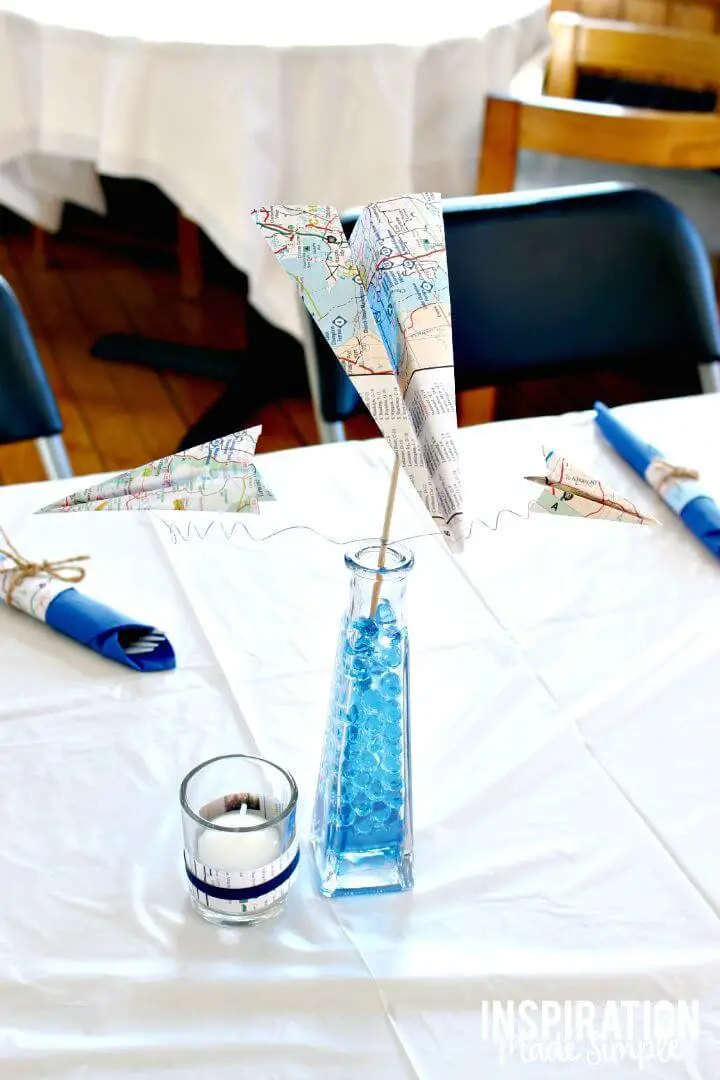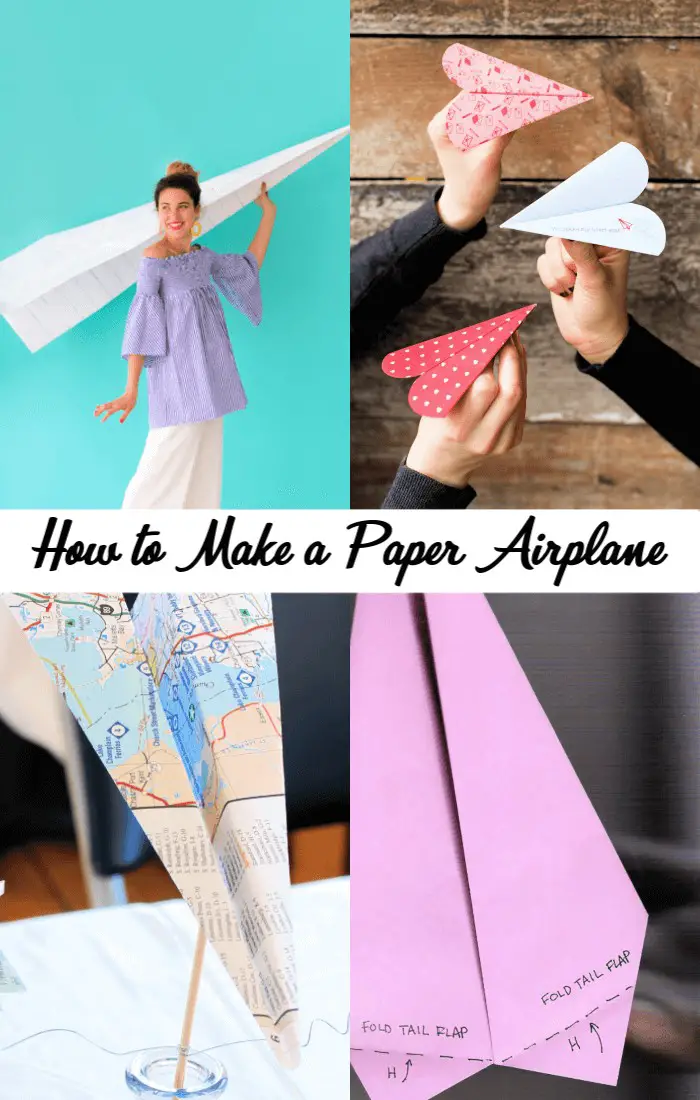
If you’re eager to learn the art of creating paper airplanes, join us on a thrilling adventure! Our comprehensive guide delves into the fascinating history of paper airplanes, from their humble beginnings to modern designs and safety considerations. Whether you’re crafting for personal enjoyment or educational purposes, we’ve got you covered with troubleshooting tips and advanced techniques for enthusiasts.
How to Make a Paper Airplane
In just 60 seconds, you can create a paper airplane that defies gravity and soars to great heights. To achieve this feat, follow these straightforward steps:
Step by Step Instructions
Step 1: Prepare Your Paper
Begin with a conventional 8.5 x 11-inch sheet of paper, specifically chosen for its suitability in crafting an aerodynamically optimized paper airplane capable of achieving impressive distances and velocities.
Step 2: Fold the Paper in Half
To begin, carefully create a precise crease by folding the top edge of the paper downwards towards the bottom edge, ensuring a sharp and symmetrical fold. This foundational fold sets the stage for the rest of the construction process.
Step 3: Make the Nose
To begin, hold the paper at an angle with the fold facing towards yourself. Next, take the top edge and fold it inward, creating a small opening that will eventually become the aircraft’s nose. Be sure to leave a slight gap between the folded edge and the rest of the paper to allow for this crucial feature.
Step 4: Mirror the Fold
To achieve stable flight, it’s essential to maintain the aerodynamic balance of your plane by ensuring that both sides are symmetrical. To do this, take the paper and fold the opposite side to match the initial crease you created in Step 3. This subtle adjustment may seem insignificant, but it plays a vital role in keeping your aircraft flying smoothly.
Step 5: Shape the Body
As you begin the process of preparing your paper for folding, concentrate on creating a precise crease by folding each side down towards the top layer, taking care not to fold it entirely to the edge. A deliberate decision to leave a small gap is crucial at this stage, as this reserved space will later prove advantageous in ensuring a smooth and accurate finish.
Step 6: Repeat on Both Sides
To achieve optimal results, it’s essential to apply this crucial step uniformly across both sides of the paper. This ensures the airplane retains its symmetrical structure, guaranteeing stable flight and minimizing turbulence.
Step 7: Form the Wings
To bring your paper airplane to life, begin by opening and closing the paper slightly, then gently press down on it to create the fuselage. Next, fold the sides inward to form the wings, ensuring they’re symmetrical to guarantee a smooth and stable flight.
Step 8: Final Adjustments
As you fold the wings of your paper airplane, you’re just one step away from launching it into the air. To take its performance to new heights – literally, consider applying a tiny piece of tape to secure the layers and give your creation added stability. This simple tweak can help your plane soar up to 100 feet or more, making for an even more thrilling flight.
Step 9: Ready for Takeoff
As you hold your newly crafted paper airplane, take a moment to appreciate the culmination of creative effort that has led to its creation. Now, with gentle care, prepare for liftoff by giving it a smooth and deliberate toss into the air. Observe as it glides effortlessly through the atmosphere, its trajectory a testament to the laws of physics and your own imagination.
Video Tutorial
While making a paper airplane may seem daunting at first, watching a step-by-step video tutorial can greatly aid the learning process. The accompanying written guide provides an added layer of clarity, allowing you to visually comprehend each fold as you work through the process. As you master the techniques, your patience and persistence will pay off, culminating in a flying marvel that’s sure to impress. With every successful flight, your skills will improve, and soon you’ll be creating aircraft that soar to new heights.
The Fascinating Journey of Paper Airplanes
The seemingly simple paper airplane has a rich history that reflects the evolution of actual flight, making it a symbol of creativity and simplicity. As we explore its origins and development, we’ll uncover the fascinating story behind this iconic craft.
Origins and Early History
In ancient China, around 500 BC, the art of origami emerged, marking the beginning of a fascinating story that would unfold over time. This intricate paper folding technique not only brought joy and entertainment but also served as a tool for teaching fundamental principles of aerodynamics. As these early paper crafts spread to Japan, they laid the groundwork for the evolution of paper airplanes. The Chinese were known to create flying toys from folded paper, which likely preceded modern paper aircraft. Through cultural exchange, the concept of paper planes traveled, with each civilization adding its unique flair to the designs, ultimately giving rise to the diverse range of paper airplane creations we see today.
Advancements in Paper Aircraft
In the 19th century, a surge in innovation transformed the humble paper airplane into a precision-crafted instrument. Literary records from as early as 1864 showcase the evolution of these lightweight flyers, which were initially conceived for children’s entertainment. This period also witnessed pioneers in aviation, including the Wright Brothers, utilising paper models to refine their theories and designs, thereby pioneering breakthroughs in flight control and stability. The advent of computer-aided design software and the internet has since taken this art form to new heights, empowering enthusiasts to create intricate, high-performance models that defy gravity.
Modern Paper Airplanes
Paper airplanes have evolved from a simple childhood activity to a symbol of human innovation and the quest for flight. This unassuming design has been harnessed as an educational tool to illustrate the principles of aerodynamics and flight. Furthermore, it has become a competitive sport, with enthusiasts worldwide vying for the longest flight or most daring maneuvers. The rich history of paper airplanes serves as a testament to humanity’s enduring fascination with flight, spanning centuries from ancient China to modern-day competitions. This humble creation continues to inspire pilots of all ages, demonstrating that even in the simplest forms, we can find beauty and excitement.
Design Variations for Paper Airplanes
The world of paper airplanes is a vast and fascinating one, where creativity meets physics. The art of crafting each design variation has a direct impact on how it performs in flight, whether you’re aiming for distance, speed, or precision tricks. In this realm, every fold, crease, and curve holds the key to unlocking unique characteristics that set each plane apart.
The Dart
The iconic Dart paper airplane design is renowned for its impressive speed and exceptional range. Its sleek, aerodynamic profile features a pointed nose and slender wings that work together to generate tremendous airflow, allowing the plane to cut through the air with ease.
The Glider
The Glider design prioritizes stability and air time over speed, featuring broader wings and a more substantial body that enables a smooth glide through the atmosphere. This aerodynamic configuration allows the glider to sustain flight for extended periods.To create your own Glider, begin with a square piece of paper. Start by folding it diagonally, followed by an unfolding. Next, fold two opposite corners towards the center line. Flip the paper over and fold the top point downwards towards the bottom edge. Finally, fold the plane in half away from you, then create the wings by folding them down parallel to the bottom edge of the plane.In terms of flight characteristics, the Glider excels at staying airborne for longer durations, making it an excellent choice for indoor flights where precision and control are crucial.
The Stunt Plane
The Stunt Plane is designed for aerial acrobatics, capable of executing loops and rolls with ease. Its compact wings and robust body allow it to withstand the stresses involved in such maneuvers.
To create this aircraft, start by folding a rectangular piece of paper in half lengthwise, then unfold it. Next, fold the top edges towards the center crease before folding the top point down to leave roughly an inch of space at the bottom. Fold the plane in half towards yourself and shape the wings by lifting them up at a slight angle.
In terms of flight performance, the Stunt Plane is highly agile and can be tweaked to perform various tricks by adjusting the wingtips or adding flaps for added control.
When crafting an effective paper airplane, precision and symmetry are key. Experiment with different designs and modifications to optimize its flight capabilities. As you test and refine your design, enjoy the process of discovering the most efficient configuration!
Safety Guidelines for Paper Airplanes
While the thrill of making and flying paper airplanes can be an engaging and instructive experience, it’s crucial to prioritize safety to guarantee a enjoyable time for all participants. To achieve this, consider the following essential guidelines:
Indoor Flying
Before engaging in the fun activity of flying paper airplanes, it’s essential to ensure a safe and respectful environment for everyone involved. This means clearing the area of any obstacles that could pose a tripping hazard or cause accidents. Additionally, be considerate of others’ personal space and avoid targeting them with your creations – especially their faces and eyes! Moreover, respect the property around you by refraining from flying paper airplanes near fragile objects or areas where they could cause damage. By taking these precautions, you’ll be able to enjoy this classic childhood activity while minimizing the risk of harm or destruction.
Outdoor Flying
When embarking on a paper airplane adventure, it’s essential to prioritize safety above all else. To minimize risks, opt for a calm day with gentle winds, as turbulence could compromise control. Additionally, select open spaces far from roads, power lines, and water bodies to ensure a safe and enjoyable flight experience. Furthermore, when flying with children, always maintain close supervision by an adult to guarantee their safety and well-being. By adhering to these straightforward guidelines, you can indulge in the thrill of paper airplanes while safeguarding yourself and others from potential harm.
Troubleshooting Tips for Paper Airplanes
Despite the thrill of watching a paper airplane soar, it’s not uncommon for them to fall short of expectations. When this happens, it’s time to get to the root of the problem. By identifying and addressing common issues, you can turn those lackluster flights into triumphant triumphs. Here are some troubleshooting tips to help you get back on track:
Symmetry Problems
When inspecting your bird’s plumage, a crucial step is to meticulously examine each fold. A well-groomed bird boasts folds that are not only sharp but also symmetrical in shape. To achieve this, carefully scrutinize every fold, making sure they align with precision. In addition, assess the wings for any discrepancies – if one wing appears higher or lower than the other, employ gentle pressure to coax it into harmony with its counterpart.
Flight Stability
When it comes to fine-tuning the aerodynamics of your aircraft, there are several subtle adjustments you can make to achieve greater stability and control. One key area is the nose weight, where a small but deliberate addition can have a significant impact on overall performance. Similarly, tweaking the tail fins can also play a crucial role in smoothing out flight paths and minimizing turbulence.
Performance Enhancements
To take your paper airplane flights to new heights, fine-tune those wing adjustments. A slight bend can dramatically impact lift or even alter the plane’s trajectory. It may take a few trial runs to get it just right, but don’t be discouraged – persistence is key to mastering the art of paper airplane flight. With practice and patience, you’ll soon be soaring to new levels.
Educational Insights on Paper Airplanes
Familiarizing yourself with the fundamental concepts of aerodynamics can significantly elevate your enjoyment of designing and piloting paper aircraft. To make this process more engaging and informative, let’s break down these principles in a way that’s both enjoyable and easy to grasp.
The Four Forces of Flight
The fundamental dynamics of every paper airplane, regardless of its simplicity or intricacy, are governed by four primary forces: lift, weight, thrust, and drag. These forces interact in a delicate balance to shape the flight path of our aerial creations.
Lift is the upward force generated by the air flowing over and under the wings, with the wing’s curvature playing a crucial role in this process for paper airplanes.
Weight, on the other hand, is the downward pull exerted by gravity, which is simply the mass of the paper itself.
Thrust enters the picture when we throw the airplane, providing the forward momentum that propels it through the air.
Finally, drag is the resistance created by the surrounding air, slowing down the plane’s movement. A well-designed airplane with a streamlined shape can help minimize this force and optimize its aerodynamic performance.
Simple Experiments to Try
To enhance the learning experience, I’ve come up with two interactive experiments that you can try with your paper airplanes: The Lift Challenge and The Drag Test. For the former, create two identical planes and attach a small paper clip to the nose of one. Then, throw both planes with the same force and observe how the added weight affects their lift. In the latter experiment, design two planes with different nose shapes – one narrow and pointed, the other blunt. Next, throw them and note how the shape influences their flight due to drag. By grasping these fundamental concepts, you’ll be able to test your designs and discover what makes them soar or stall.
Advanced Techniques for Paper Airplane Enthusiasts
For individuals who have grasped the fundamentals of crafting paper airplanes and are seeking to elevate their skills, several sophisticated methods can be employed to enhance the overall aerodynamics and flight capabilities of this humble aircraft.
Fine-Tuning for Performance
Making subtle changes to your paper airplane design can significantly impact its performance. Here’s how to fine-tune your creation:By subtly tilting the wings upwards, you can boost stability and ensure a smoother flight. This simple adjustment can make all the difference in keeping your plane on track.In addition to wing dihedral, small creases at the rear of the wings can help regulate pitch. This will give you more control over the plane’s attitude during flight.Finally, adding slight vertical folds at the back can help stabilize the plane and ensure it flies straight. With these adjustments in place, you’ll be amazed at how much better your paper airplane performs.
Designing for Specific Goals
To achieve different flight objectives, consider tailoring your aircraft’s design. Whether you want to soar further, speed across the skies, or pull off daring maneuvers, subtle adjustments can make all the difference. For instance, if you’re aiming to cover greater distances, a sleek and streamlined profile with long, slender wings can help you glide effortlessly through the air. On the other hand, if speed is your primary concern, focus on building a lightweight yet robust craft that minimizes drag and allows for swift acceleration. Meanwhile, for those seeking to perform aerial stunts, a sturdy yet agile design with adjustable flaps and shorter wings can provide the necessary control and maneuverability.
FAQs About Paper Airplanes
The nostalgic pastime of crafting paper airplanes has captivated individuals from childhood to adulthood, transcending generational boundaries. As we delve into the world of these ephemeral contraptions, common queries arise, providing a comprehensive understanding of their allure and the artistry that goes into creating them.
What is the world record for the longest paper airplane flight?
While the art of crafting a paper airplane may seem simple, it’s amazing to think that someone has actually timed how long one can fly for. In fact, the current record holder for longest time flying a paper airplane is Takuo Toda from Japan, who managed an impressive 29.2 seconds. It’s incredible to consider the skill and precision required to create a plane that can stay airborne for almost half a minute.
Can paper airplanes be made from any type of paper?
While traditional printer paper is a common choice for crafting paper airplanes, other types of paper can also be used to create these flying wonders. Magazine pages and postcards are two examples of unconventional materials that can be repurposed into aerodynamic aircraft. Interestingly, the type of paper employed can have a notable impact on the airplane’s overall performance.
Do paper airplanes come in different shapes and sizes?
Paper airplane design can get creative when you start experimenting with different shapes and forms. Imagine taking a simple plane and turning it into an elephant, spider, dragon, or even a helicopter – the possibilities are endless!
How important is precision when folding a paper airplane?
When it comes to crafting folds, precision is paramount. The slightest variation – as small as 1 millimeter – can have a profound impact on the overall performance of your creation. In this case, a mere 1 mm difference can result in a significant 25% decrease in flight time.
What is the average lift-to-drag ratio of a paper airplane?
While most people are familiar with the concept of a paper airplane, few realize that it possesses a remarkable aerodynamic property – a lift-to-drag ratio of approximately 11:1. This is eerily reminiscent of the early flight endeavors by the Wright Brothers in 1903, who managed to achieve a similar feat with their own handmade flyer.
What is the record distance for a paper airplane throw?
A remarkable feat in the world of paper aerodynamics was achieved when Joe Ayoob threw a plane designed by John Collins for an astonishing distance of 226 feet and 10 inches (69.14 meters). This remarkable achievement set a new record, pushing the boundaries of what’s thought to be possible with a simple piece of paper.
Has a paper airplane ever been thrown from a high altitude?
David Green’s remarkable feat in paper airplane innovation was marked by a groundbreaking achievement – he successfully launched his creation to an unprecedented height of 35,043 meters (114,970.5 feet), shattering previous records and leaving a lasting impression on the world of aerodynamics.
What is the largest paper airplane ever made?
A remarkable feat in aerodynamic innovation, students and employees at Germany’s Braunschweig Institute of Technology collaborated to create a colossal paper airplane with an impressive wingspan measuring 59.7 feet (18.21 meters) – a testament to the power of teamwork and creative problem-solving.
Are there paper airplane competitions?
While the world of competitive paper airplanes may not be as well-known as some other sports, it’s a thriving community with numerous events held annually around the globe. Enthusiasts from all walks of life come together to showcase their creations and pit their skills against one another in a battle of aerodynamics.
How do paper airplanes fly?
As paper airplanes take to the skies, they rely on a combination of their initial elevation and mass to maintain momentum until they touch down. In contrast to their full-scale counterparts, these miniature aircraft lack the propulsion power provided by engines. Instead, the kinetic energy needed for flight is transferred from the person throwing them.
Can paper airplanes be thrown in space?
In a fascinating demonstration of creativity and resourcefulness, Japanese astronaut Takuya Onishi took to the space shuttle’s microgravity environment to showcase the aerodynamics of a humble paper airplane. By tossing the folded craft through the airless void, he proved that even in the absence of traditional air resistance, the plane could still glide and flutter, albeit with a unique set of characteristics. For those interested in delving deeper into the world of paper airplanes, exploring FAQs on design and flight can be an engaging way to learn more about the intricacies involved in creating and controlling these lightweight wonders.
25 DIY Paper Airplane Ideas
Embark on a thrilling adventure through the world of DIY paper airplanes, where creativity and imagination know no bounds. Dive into 25 exciting and easy-to-follow projects that cater to all ages, from timeless classics to innovative masterpieces. Get ready to take your skills to new heights and experience the joy of flight with these simple yet engaging tutorials.
How to Make a Paper Airplane
Transforming a simple sheet of paper into a soaring paper airplane is an exhilarating experience that’s perfect for hobbyists and beginners alike. With Instructables’ step-by-step guide, you’ll learn the secrets to creating aerodynamic designs that defy gravity and leave you in awe. Whether you’re looking for a fun activity to share with friends or a relaxing pastime to enjoy on your own, mastering the art of paper airplane making has never been more accessible. So, gather your materials and get ready to take flight with Instructables’ expert tips, as you discover the thrill of crafting paper airplanes that not only soar through the air but also cover impressive distances.
Free Printable Paper Airplane Template
Unleash the art of paper airplane crafting with We Are Teachers’ comprehensive video guide and downloadable instructions! This interactive resource seamlessly combines hands-on learning with the thrill of discovery, allowing young minds to grasp fundamental aerodynamics principles while honing problem-solving and fine motor skills. From making a sleek dart to designing a daring stunt plane, step-by-step directions ensure success and encourage creativity. Download your free printable guide today and take flight into an engaging adventure that makes learning a true delight.
DIY Paper Airplane – Step by Step Instructions
Transform your everyday paper into majestic airborne vessels by embracing the art of crafting paper airplanes. Under the expert guidance of Debbie Chapman from One Little Project, master the intricacies of folding techniques and nuances of paper weight to create three distinct models: the swift classic dart, the acrobatic spinner, and the long-gliding distance flyer. As you embark on this fun-filled adventure, discover how subtle variations in design can significantly impact a plane’s aerodynamics, guaranteeing hours of engaging entertainment and self-discovery for crafters of all ages.
Making Your Own Paper Airplane
Unleash the speed of flight by mastering the art of making a fast paper airplane. This unique tutorial builds upon the classic design by adding just one additional fold, resulting in significantly enhanced aerodynamics for faster flight. Perfect for family fun days or friendly competitions, this speedy paper plane not only provides entertainment but also offers a practical lesson in STEM principles. Discover why subtle adjustments like a narrower wing design and added weight at the front can make all the difference, propelling your creation through the air with greater ease. With simplicity and performance at its core, this high-speed paper glider is sure to impress as you test and refine it with ease.
Make a Paper Airplane in 10 Quick Steps
Crafting a paper airplane is a timeless activity that brings people together, regardless of age. With Instructables’ step-by-step guide, you can create a sleek and symmetrical plane in just ten easy-to-follow steps. The key to success lies in making precise folds, which ensures your creation glides smoothly through the air. Using a standard 8 1/2″ x 11″ piece of paper and dedicating a few minutes of your time, you’ll be ready to launch your unique design into flight. Remember, achieving symmetry and sharp creases are crucial to getting the most out of this classic paper-folding craft.
How to Fold a Paper Airplane
Take your paper airplane game to new heights by exploring four innovative designs on Frugal Fun For Boys and Girls. These unique styles offer a thrilling combination of fun and flight performance that’s sure to impress kids and parents alike. With easy-to-follow instructions for each model, from the speedy ‘Rocket’ to the agile ‘Super Glider,’ even novice flyers can achieve impressive results. Beyond just being a fun activity, these paper crafts also provide a hands-on way for kids to learn about aerodynamics in action. Whether crafting the stable ‘Falcon’ or the reliable ‘Bulldog Dart,’ these designs transform the traditional paper plane into an engaging blend of science and play. Perfect for family bonding, educational projects, or simply enjoying a relaxing afternoon, these paper airplanes are ready to soar with just a few folds.
Boomerang Paper Airplane With Details Instructions
Embark on a thrilling adventure in paper airplane crafting with a unique twist! FeltMagnet presents a comprehensive guide that caters to all ages, teaching you how to create a remarkable boomerang paper airplane that returns to its maker. This engaging tutorial takes you on a journey through three captivating designs, ranging from a simple, kid-friendly version requiring minimal folds to a more complex style inspired by The Paper Airplane Guy’s expertise. Each design is accompanied by crystal-clear, visual instructions, ensuring your success in crafting these innovative flyers. As you test your folding skills and bring your paper creations to life, relish the satisfying experience of witnessing your very own boomerang action unfold.
How to Fold an Origami F 16 Paper Airplane
Mastering the art of origami requires patience and attention to detail, but with a clear guide, even complex designs become achievable. The Instructables tutorial on creating an impressive F-16 plane is a testament to this, as it walks readers through each step of the process. Starting with a standard sheet of printer paper, the instructions unfold (pun intended) into a series of precise folds that bring the wings and final details to life. While this paper jet may not take to the skies, the sense of accomplishment and creative fulfillment are just as exhilarating. As you work through the project, be prepared to impress friends and family with your newfound origami skills and appreciate the beauty in the intricate design.
Making Airplane Out of Paper
Get ready to take your creativity to new heights! Making a perfect paper airplane is easier than you think, thanks to One Crazy Mom’s simple, step-by-step guide. All you need is an 8.5X11 sheet of paper and some patience to craft a soaring masterpiece with your family. Not only will this activity provide hours of entertainment, but it’s also an excellent opportunity to teach kids about the importance of paper weight and flight dynamics. With straightforward instructions, even the most novice crafters can create a paper plane that’s sure to amaze. So grab some paper, gather your little ones, and get ready for a hands-on adventure that’s fun, engaging, and budget-friendly!
Paper Airplane With Free Printables
Dive into the world of paper crafting with The Best Ideas for Kids’ comprehensive guide. Our simple, step-by-step instructions will empower you to create two iconic paper planes: the swift and agile dart, and the elegant glider. Whether you’re seeking engaging activities with children or reliving cherished childhood memories, these paper aircraft promise an exhilarating experience.
To amplify your creativity, download our complimentary printable templates, designed for coloring and personalization. Crafted to soar effortlessly through the air, our paper planes invite you to learn, play, and marvel at your handiwork as it takes flight.
DIY Fastest Paper Airplane at Home
Want to create a record-breaking paper airplane? The Instructables guide to building an eagle is a simple yet effective way to achieve impressive speeds with minimal effort. By following a clear, step-by-step process, crafters of all levels can master the art of paper aviation and watch their creations take flight. With its engaging and easy-to-understand approach, this tutorial is ideal for those looking to enhance their paper airplane-building skills. As you fold your way to creating an eagle, perfect your technique and enjoy the thrill of seeing your handiwork soar through the air, leaving other planes in its wake.
Folding a Giant Paper Airplane
Get ready to take your backyard adventures to new heights with a fun and engaging activity that’s perfect for all ages: crafting giant paper airplanes from poster board. With just a few simple supplies – a standard-sized poster board, some tape for assembly, and your favorite decorations – you can create an impressive yard glider that’s sure to delight. For the best results, opt for sturdier, non-reflective poster boards and secure your creation with packing tape to ensure it stays airborne. Want to add an extra touch of whimsy? Try using a cute stuffed animal as a pilot! While not necessary, it’s a fun way to bring some personality to your flight. To master the ballista style fold, be sure to check out our provided photo and video tutorials. With this craft, you’ll combine creativity, engineering, and a healthy dose of imagination for an outdoor experience that’s truly one-of-a-kind.
Make Your Own Paper Airplane
Eager to create an exceptional paper airplane that defies gravity? Our comprehensive guide at All for the Boys takes you through a series of meticulous steps to turn an ordinary 8.5″ x 11″ sheet into an extraordinary flying machine. From the precise folding techniques that make all the difference to a critical final tweak, every aspect is carefully covered to guarantee your paper airplane earns its reputation as a high-flyer. And if you encounter a pesky boomerang effect with heavier paper, we’ll reveal a simple yet effective staple trick to fine-tune your plane’s aerodynamics and get it soaring like never before. Give it a try and share your thrilling flight experience with us!
How to Do You Make a Paper Airplane
Unleash your child’s creativity and get set for a thrilling experience with The Taylor House’s step-by-step guide on crafting paper airplanes. On a rainy day, this engaging activity transforms an ordinary sheet of paper into an impressive flyer, encouraging kids to think outside the box and experiment with different designs. Chrissy’s clear instructions make it easy for anyone to join in on the fun, making it the perfect family bonding experience. As kids test and tweak their creations, they’ll develop fine motor skills and gain a basic understanding of aerodynamics, all while having loads of amusement trying to create the ultimate paper plane. Get ready to fill your home with excitement as you see whose creation soars the highest!
How to Make Paper Airplane Party
Throwing a paper airplane-themed party for your little ones can be an exhilarating experience, with our website offering a fun-filled guide to creating unforgettable memories. At the heart of the celebration is a show-stopping giant paper airplane crafted from a roll of white paper, meticulously designed to resemble a piece of lined notebook paper. The step-by-step instructions are crystal clear, ensuring even novice crafters can successfully assemble this oversized decoration. To take it to the next level, our guide provides expert tips on how to fold the paper airplane for maximum impact and offers creative suggestions for suspending it with a towing banner. Combine this with a thrilling paper airplane-throwing contest for the kids, and you’ll have a recipe for an electrifying and interactive party theme that’s sure to be a massive hit.
Easy DIY Heart Paper Airplane
Transform ordinary days into extraordinary ones by creating charming Valentine’s Day crafts with Lia Griffith’s heartwarming paper airplane tutorial. This comprehensive guide is perfect for both kids and adults, offering free downloadable patterns that include sweet mini love hearts and unique ‘happy mail’ designs. With simple print-and-fold instructions, you’ll be able to create a fleet of delightful paper airplanes in no time. Add a personal touch by including a heartfelt note, and watch as your handmade Valentine takes flight. Join Lia Griffith for more seasonal crafting ideas and become part of a vibrant community that celebrates the joy of creating. Crafting memories has never been more fun or accessible, making this tutorial an ideal way to spend quality time with loved ones.
Simple Map Paper Airplane Centerpiece
Transform your party decorations with Inspiration Made Simple’s innovative DIY guide! For travel-themed events, create whimsical centerpieces that not only add a touch of excitement but also fit within any budget. To make this charming centerpiece, you’ll need maps, bamboo skewers, steel wire, wire cutters, hot glue guns, jars, and water beads. Begin by folding the maps into medium and small airplane shapes, then secure them to the skewer using wire. Next, place the assembled airplanes in a jar filled with water beads for an eye-catching display that will surely impress your guests.
Homemade Paper Airplane in 1 Minute
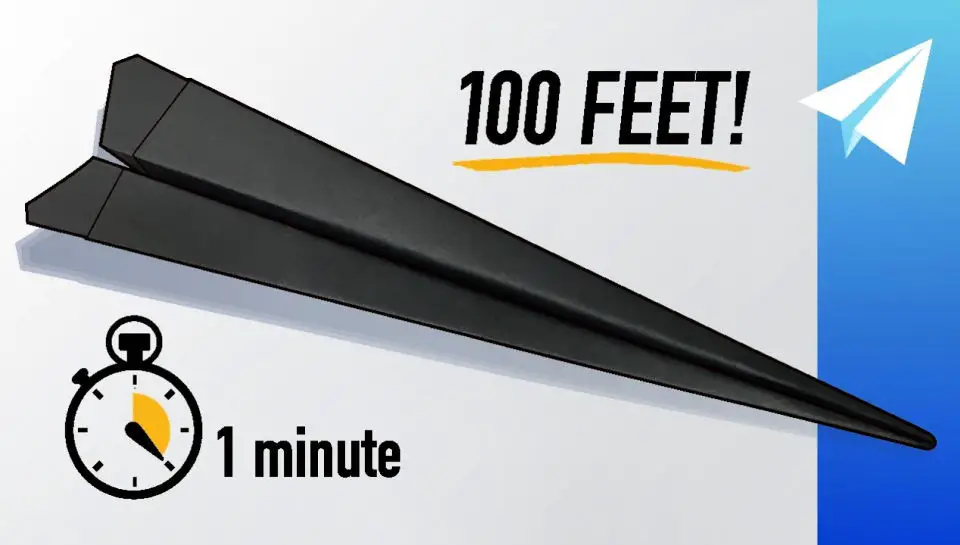
Are you ready to take your paper airplane game to new heights? In just 60 seconds, a popular YouTube tutorial reveals the secrets behind crafting a competition-winning design that can soar over 100 feet. Perfect for crafty enthusiasts and aerodynamics buffs alike, this video from Foldable Flight breaks down the process into simple, easy-to-follow steps using standard 8.5 x 11 inch paper. With minimal materials needed and clear instructions, you’ll be creating and watching your paper airplane glide through the air in no time. So grab a sheet of paper and get ready for some high-flying fun!
How to Fold a Paper Airplane

Crafting an extraordinary paper airplane that defies gravity? Look no further than YouTube’s Paper Planes Channel, where a step-by-step guide awaits to help you create a masterpiece capable of soaring through the air for an impressive duration. By following their intuitive tutorial, folding your standard A4 printer paper into an aerodynamically designed shape becomes a breeze. Perfect for enthusiasts, educators, or anyone captivated by the art of paper crafting, this video tutorial promises to yield a paper airplane that can glide effortlessly, potentially for a remarkable amount of time in ideal conditions. Get ready to fold, launch, and marvel at your handiwork as it takes to the skies!
DIY World Record Paper Airplane
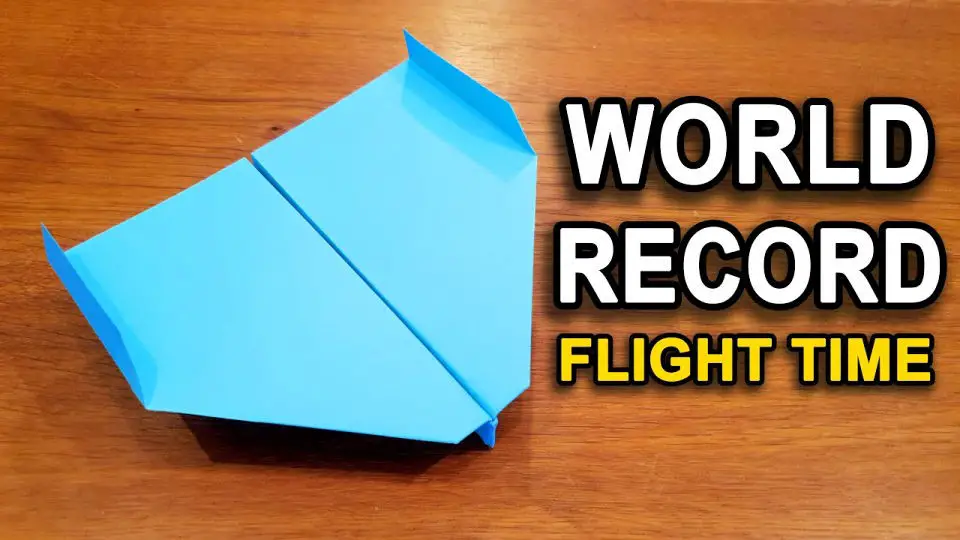
Mastering the art of crafting the world-record-holding Sky King paper airplane requires patience, precision, and a clear understanding of the folding process. A comprehensive YouTube video tutorial, presented by a seasoned enthusiast, breaks down the intricacies of creating this exceptional design using only an A4 sheet of printer paper. The instructional guide emphasizes the significance of meticulous folds and symmetry, offering practical tips to guarantee your paper aircraft achieves remarkable flight times. To revisit any steps or adjust your pace, simply manipulate the video’s speed settings as needed. With these authoritative guidelines, you’ll be well-equipped to craft a meticulously designed aerodynamic masterpiece that may potentially surpass the world records.
Make a Jet Fighter Paper Airplane
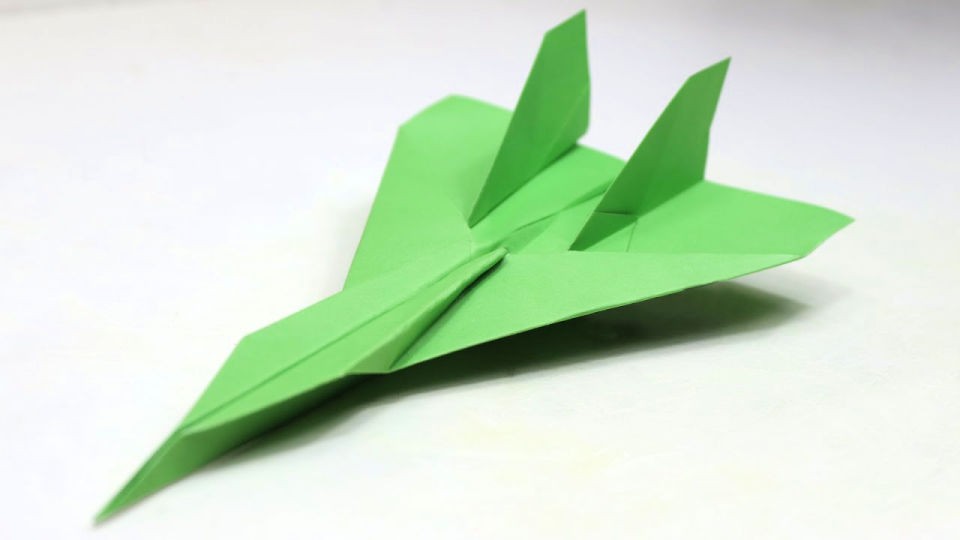
Discover the thrill of crafting a high-performance paper jet fighter that soars with ease! YouTube’s tutorial video provides a clear, step-by-step guide on how to create this impressive origami aircraft using just an A4 printer sheet. The slow-paced instructions make it easy for anyone interested in paper crafts or origami to follow along and produce a remarkable paper plane that not only boasts an impressive design but also achieves remarkable flight distances. Whether you’re looking for a fun and educational activity or simply want to impress friends with your creative skills, this guide is perfect for you. Simply grab a sheet of paper, tune into the video, and let the folding begin! As you master the art of creating this incredible paper jet fighter, you’ll be amazed by its agility and ability to cover impressive distances.
Best DIY Paper Airplane Tutorial

Get ready to take to the skies with a few simple folds! A YouTube tutorial reveals the secrets to crafting impressive paper planes using standard A4 paper, requiring only basic skills and attention to detail. The result is not just a fun and engaging activity but also a testament to the versatility of origami and paper crafts. With clear instructions and visual guidance, even beginners can master the art of creating paper aircraft that soar high and glide far. Whether you’re an avid hobbyist, teacher, or enthusiast, this step-by-step guide promises to deliver a thrilling experience as your creations take flight.
How to Make Paper Airplane That Flies Far
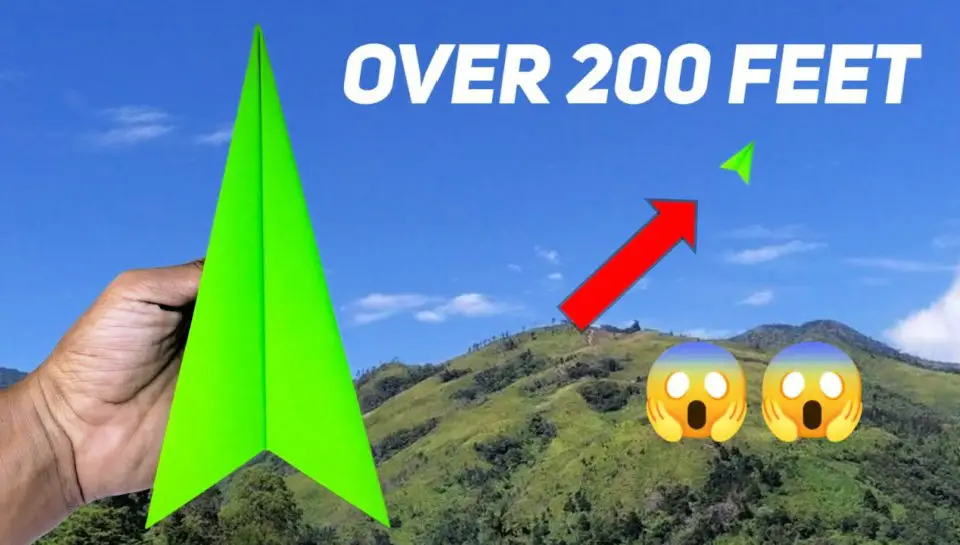
Unlocking the art of crafting paper airplanes that defy gravity is a thrilling adventure, and our engaging YouTube tutorial is the perfect guide to help you achieve spectacular results. By following our clear, step-by-step instructions, even the most novice of paper craft enthusiasts can transform a simple sheet of A4 paper into an aerodynamic masterpiece capable of soaring up to 200 feet in the air. Whether you’re looking for a fun activity to share with kids or seeking to push your creative boundaries, this video tutorial has got you covered. With its comprehensive guidance and expert tips, you’ll be amazed at how easily you can create paper airplanes that will leave everyone in awe. So why wait? Visit YouTube now and let the art of paper plane construction take flight!
Flying Paper Airplane Using A4 Paper
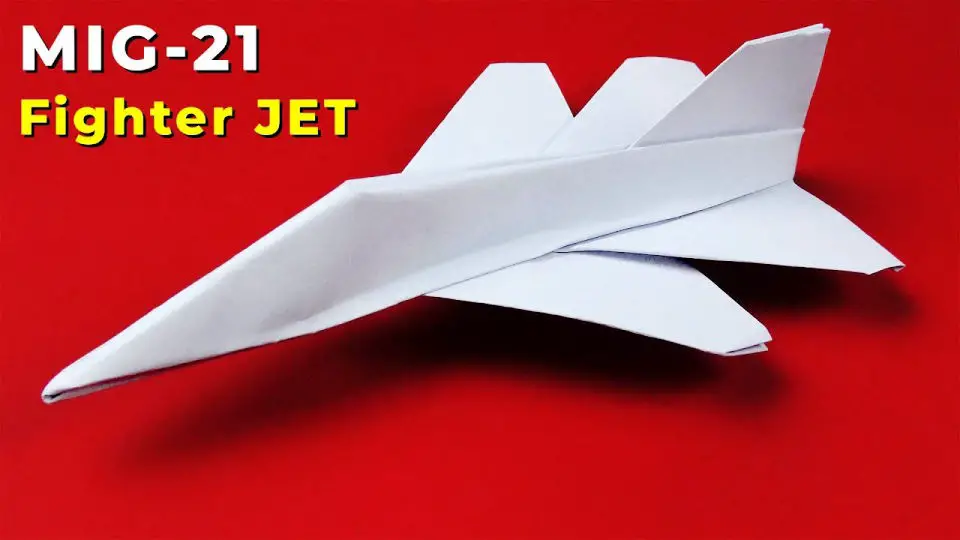
Are you ready to unleash your creativity and create a realistic paper MIG 21 Jet Fighter? You’re in luck because YouTube offers an engaging origami tutorial that will guide you through every step of the process. This fun and educational DIY activity is perfect for craft enthusiasts, origami fans, and anyone looking for a unique way to spend their afternoon. Whether you’re crafting alone or with friends and family, creating a paper jet fighter can be a rewarding experience that’s sure to provide hours of entertainment. So why not take to the skies and start your paper aviation adventure today? Simply head to YouTube and search for the DIY Origami Jet Fighter Plane tutorial to get started.
Easy and Basic Paper Airplane
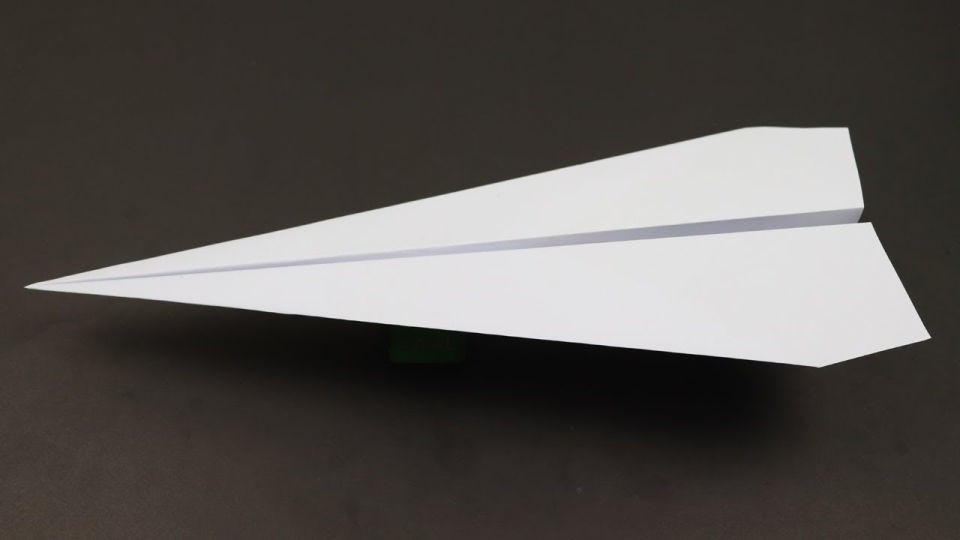
If you’re seeking an engaging and educational activity to share with your kids, look no further than YouTube’s tutorial on creating paper airplanes. This interactive video from EzzyCraftsDIY is specifically designed for parents and educators, making it an excellent resource for fostering learning and creativity. By following the easy-to-understand steps, children can develop their fine motor skills while learning the basics of origami plane-making. As they fold and shape their own paper planes, kids will also gain a deeper understanding of aerodynamics and the principles that govern flight. Not only is this activity a fun way to spend quality time with your little ones, but it’s also an excellent way to encourage creative thinking, problem-solving, and critical thinking skills. So why not grab a sheet of paper and get ready to take your learning adventure to new heights? The folding fun has just begun!
Conclusion:
While making paper airplanes may seem like a lighthearted activity, it’s actually a gateway to exploring the fascinating world of aviation. By diving into the realm of DIY paper airplanes, you’ll uncover not only a plethora of creative designs but also the opportunity to develop your skills and gain a deeper understanding of aerodynamics. With our comprehensive guide, you can learn how to craft 25 unique paper airplane variations, from classic darts to complex gliders. As you take flight, remember to prioritize safety and troubleshooting to ensure a thrilling experience. Moreover, discover the educational benefits and advanced techniques that will propel your paper airplane-making abilities to new heights.


